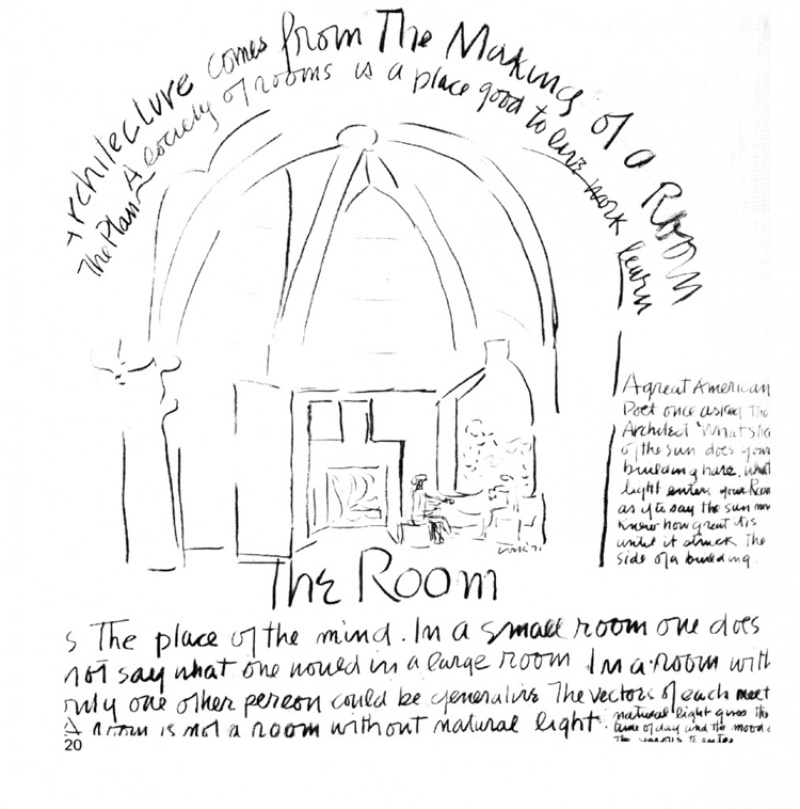As we recently proposed, we'll be posting along the exhibition opening times, some theorethical texts to share the historical background of housing issues. In January, 1973, the magazine A+U published an article by Louis I. Kahn where he wrote about the very essence of architecture and urbanism, poetically knitting them together with his observations on the building fabric of human experience.
The text The Room, the Street and Human Agreement approaches in a very poetic way to certain concerns that are part of our exhibition as well, such as the relationship between exterior and interior, the public and the private, the room and the street.
Here some excerpts of that article:
I have some thoughts about the spirit of architecture. I have chosen to talk about the room, the street, and human agreement.
The room is the beginning of architecture.
It is the place of the mind.
You in the room with its dimensions, its structure, its light respond to its character, its spiritual aura, recognizing that what ever the human proposes and makes becomes a life.
The structure of a room must be evident in the room itself. Structure I believe is the giver of light. A square room asks for its own light to read the square. It would expect the light either from above or from its four sides as windows or entrances.

So sensitive is a room.
The plan is a society of rooms.
The rooms relate to each other to strengthen their own unique nature. The auditorium wants to be a violin. Its lobby is the violin case.
The society of rooms is the place where it is good to learn, good to live, good to work.
[...]
The Street is a room of agreement.
The street is a community room.
The meeting house is a community room under a roof. It seems as though one came naturally out of the other.
[...]
A city is measured by the character of its institutions. The street is one of its first institutions. Today these institutions are on trial. I believe it is so because they have lost the inspirations of their beginning. The institutions of learning must stem from the undeniable feeling in all of us of a desire to learn. I have often thought this feeling came from the way we were made, that nature records in everything it makes how it was made. This record is also in man and it is this within us that urges us to seek its story involving the laws of the universe, the source of all material and means, and the psyche the source of all expression, Art.
—Read the complete manifesto at A+U